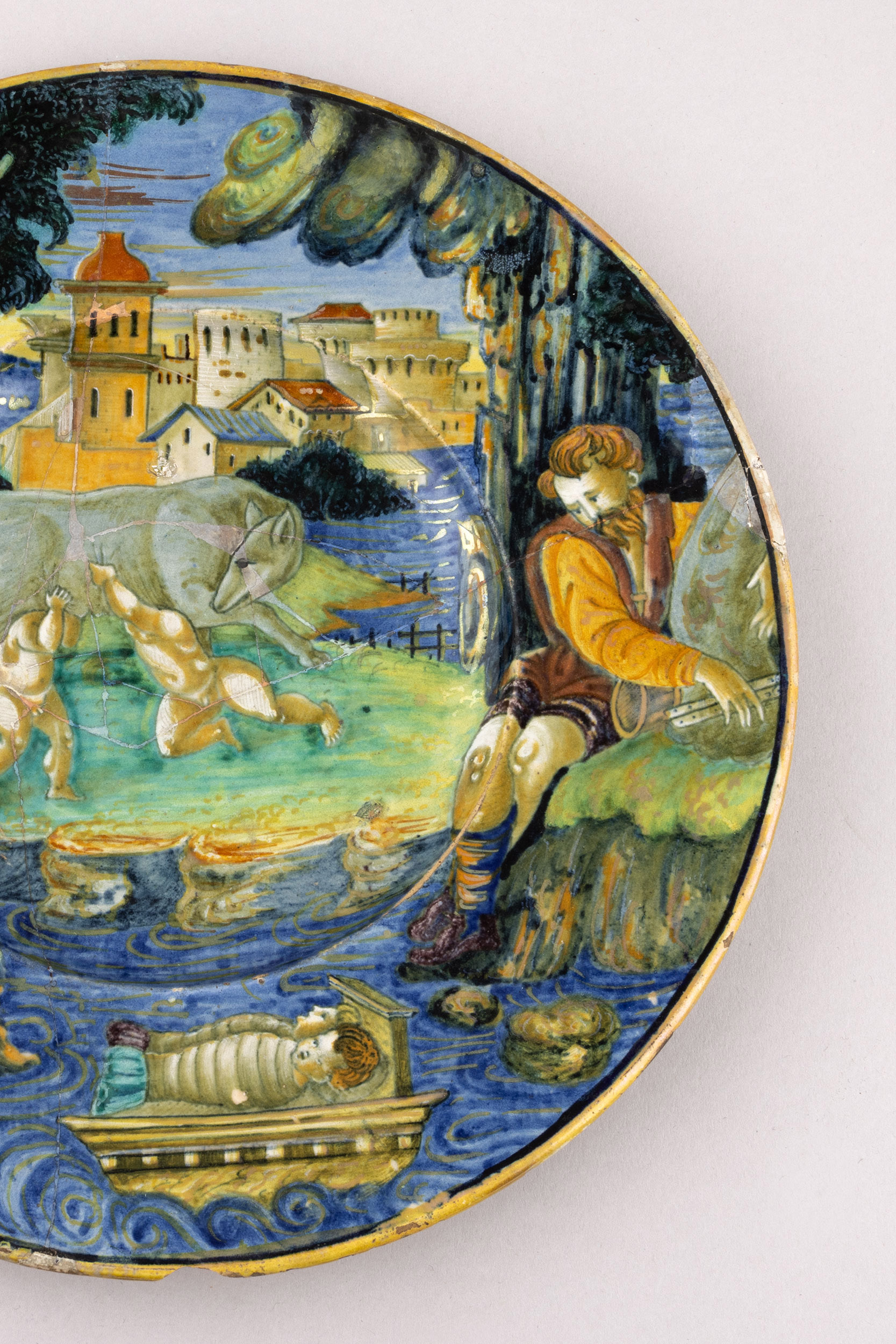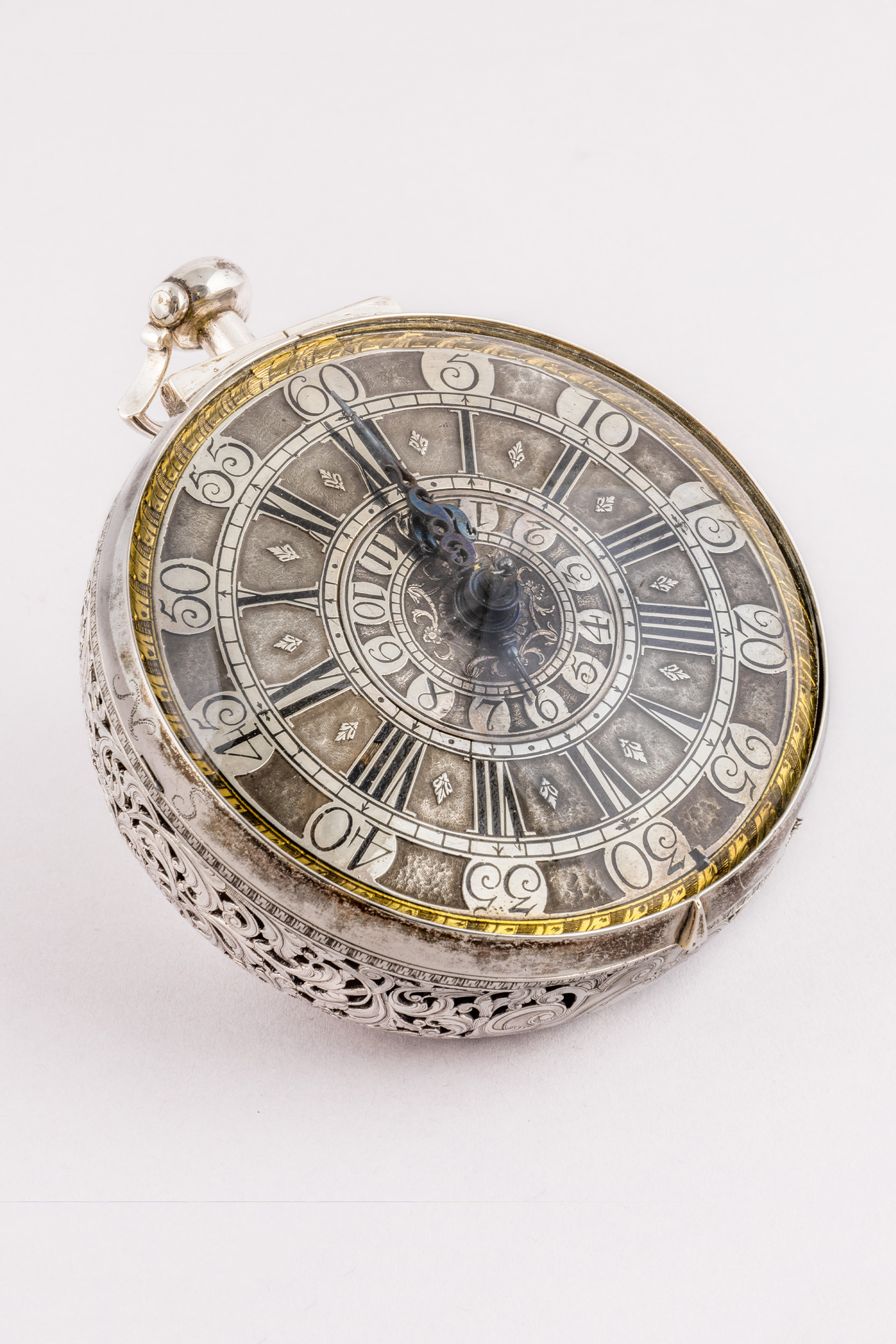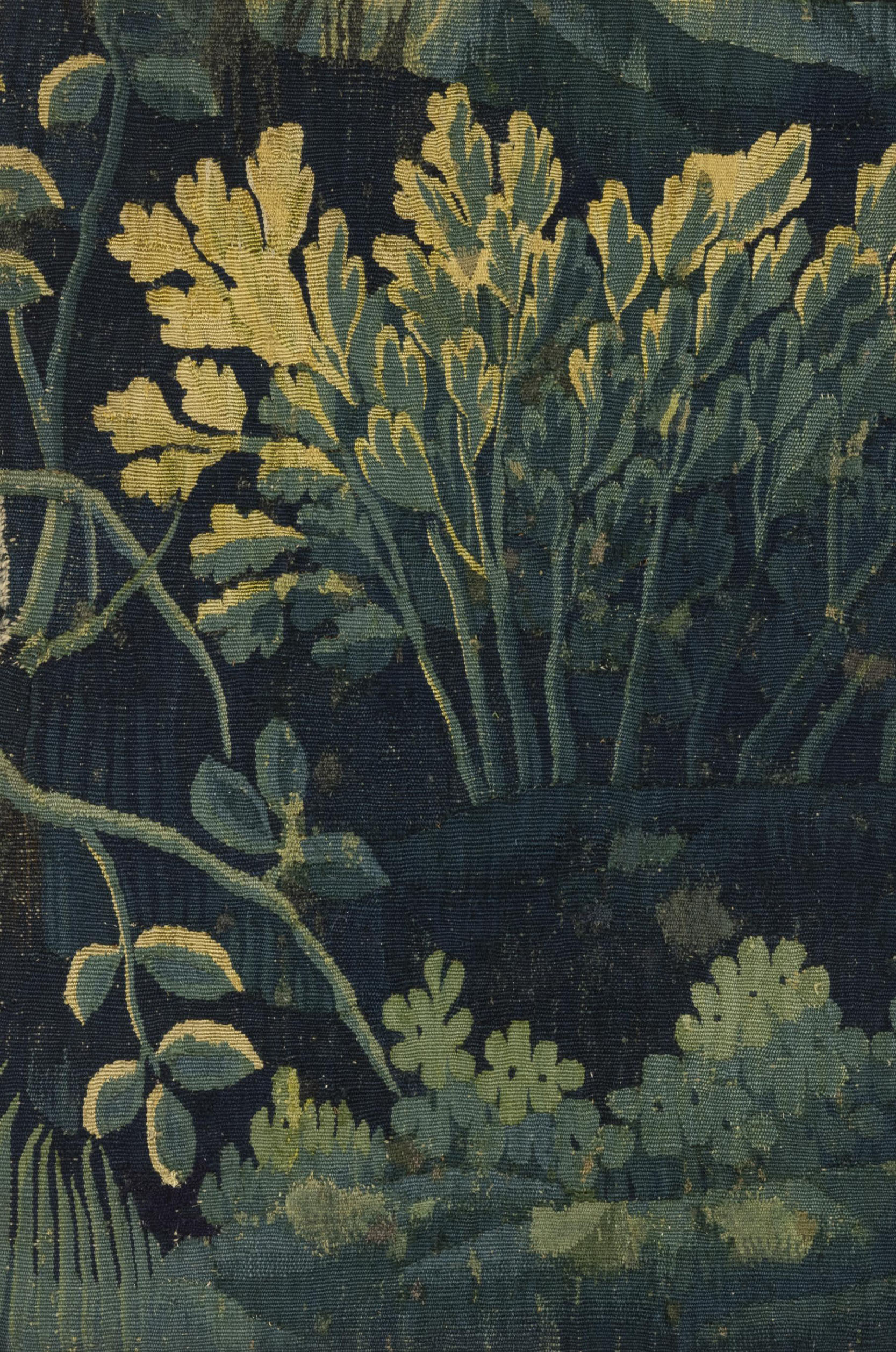Exhibition
The Baroque Chamber
Here, you encounter a fantasy landscape with powerful design and intricate details inspired by more southerly latitudes.
Here, you encounter a fantasy landscape with powerful design and intricate details inspired by more southerly latitudes.

The Baroque Chamber came from the former sugar refinery once situated in the old district of Gothenburg, and is an example of interior design from eighteenth century Swedish industrial settings. The room, which may have served as an office, was moved to the museum at the time of its opening in 1916.

The walls of the chamber feature oil-painted canvas in dark colors Photo: Ina Marie Winther Åshaug.
The wall covering is painted in dark colours and portrays as southern landscape including buildings. This technique is known as architectural staffage, used to create contrast and enrich the composition. The motif is painted in oils on a taut canvas. During the spring, public conservation work is carried out, after which the interior is furnished with additional objects. Other details in the room typical of its day are the high skirting boards, wooden panels in the window recesses and the tile stove finished in a black glaze.
If you take a few steps backwards you will see a selection of Baroque pieces from the museum’s collection. The selection was inspired by “cabinets of curiosity” of the seventeenth century, in which unusual objects and artworks from different parts of the world were placed alongside each other. Amongst other things you will find gilded leather, a mechanical clock and an imposing red Turkish rug.

During 2022 the process moved from the conservator’s studio and into the Baroque chamber. A conservator specialised in taking care of artefacts. This work provided visitors with an extra insight, focused on materials and techniques.

Maiolica or Faïence are alternative names for the same kind of ceramics: clay objects with an (often painted) translucent white tin glaze. Characteristically, the Italian Maiolica featured literary motifs that covered the entire surface of the dish. A naturalistic depiction of humans and their landscape was aspired as it was in contemporary painting. The colours were often strong and clear, and the motif could be taken from history, antiquity or religion. The work of famous renaissance artists was often used for inspiration.
Photograph: Dish (1531) ceramic, Francesco Urbini, Giorgio di Pietro Andreoli. Photographer: Ina Winther Åshaug.

It was only during the industrialisation of the nineteenth century that clocks and standard time spread in Sweden. This watch, from around 1720 is a so-called carriage clock. The mechanism is driven by a spring – unlike a floor-standing clock which is driven by a pendulum – and it gave the right time even during a bumpy journey by horse and cart. The clock’s owner might also have had use for it when stopping at inns – sleeping too long could be avoided thanks to the hammers and gongs that could be used for a wake-up signal.
Photograph: Carriage clock by Johan Külper, engraved silver, RKM 32-1960. Photographer: Ina Winther Åshaug.
Verdures, woven wall-hangings with forest or botanical motifs were popular and most workshops used cardboard modelsproduced by successful artists. Larger tapestries and woven wall-hangings were used to decorate walls in both ballrooms and homes and were imported primarily from the Netherlands, Flanders and France, but during the seventeenth century Swedish production based on overseas models.
Image: Rug (early 1600s) wool, RKM 13-1929. Photographer: Ina Winther Åshaug.
